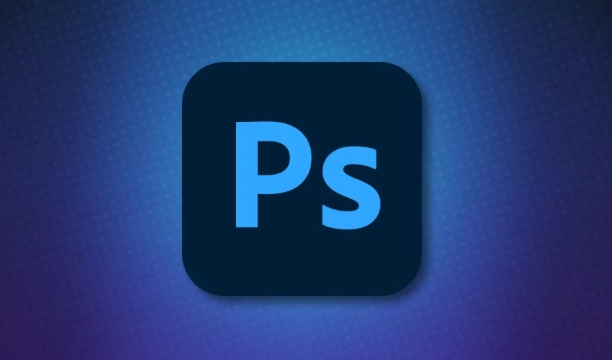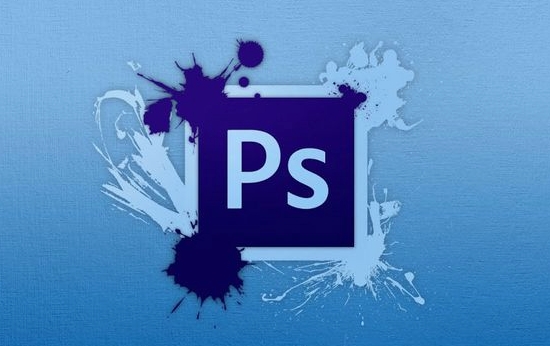The key to mastering Photoshop vanishing point filters is to correctly establish the perspective plane and reasonably use the map and repair functions. First, use the "Create Plane Tool" to draw a quadrilateral mesh that conforms to the perspective of the picture to ensure the accurate angle to avoid subsequent deformation; second, hold down Ctrl (Command on Mac) when sticking the map to drag into the picture, automatically match the perspective and fine-tune the position; second, use the "Fantasy Stamp Tool" to repair or copy operations on the same plane; finally, pay attention to detailed techniques such as using Ctrl T fine-tuning, blur tools to process edges and batch repair of repeated patterns to improve the naturalness of the effect.

It is actually not that mysterious to use Photoshop's vanishing point filter. This function is mainly used to map, repair or copy operations on the perspective surface, such as adding a poster to the wall in the photo, or styling the windows in a unified manner. If you master a few key points, you can basically get started.

Select the right perspective first: Drawing the grid is the key
The core of the vanishing point filter is to create a correct perspective plane. After opening the filter ("Filter" → "Vanishing Point" in the menu bar), the first step is to draw a quadrilateral mesh representing the perspective surface in the picture.

- Use the "Create Plane Tool" to click on the four corners to form a rectangular area that conforms to the perspective of the picture.
- For example, if you want to post a poster on a wall, the grid must fit the angle of the wall.
- The edges of the grid do not necessarily fit the edges of the image completely, but the orientation must be consistent, otherwise the subsequent operation will deform.
If this step is wrong, the subsequent maps or copying will be crooked, so spend more time adjusting the position and angle of the grid and don't rush to take the next step.
Basic operations for maps and copying
Once the grid is built, you can start doing what you want. The most common are two uses: stickers and copy/patch .

Postings
- Prepare the picture you want to post (such as a poster)
- Return to the vanishing point interface, hold down Ctrl (Command on Mac) and drag in
- The picture will automatically scale according to the grid perspective you set, and you can drag the four corners to fine-tune it.
Imitation
- Use the "Imitation Stamp Tool", after selecting the source point, apply it on the target plane
- Be careful to keep it on the same perspective plane, otherwise the effect will be incorrect.
Both functions can be well integrated into the original picture, but only if your perspective grid is accurate.
Some tips that are easy to ignore
- Ctrl T can fine-tune the position after the map , but only moves within the current plane and does not destroy perspective
- If the sticker is too stiff, you can use the Blur Tool to gently handle the edges to make it more natural to fit into the background
- If there are multiple planes, you can use the vanishing point filter to process surfaces at different angles multiple times.
Another practical scenario is to batch repair duplicate patterns, such as a row of windows. You can repair them on one window and copy them to other windows as long as they are on the same perspective.
Basically that's all. The vanishing point filter is not complicated, but the details are prone to errors. Practice a few more times and become familiar with its logic and it will be much easier to process images with perspective.
The above is the detailed content of How to use vanishing point filter in Photoshop. For more information, please follow other related articles on the PHP Chinese website!

Hot AI Tools

Undress AI Tool
Undress images for free

Undresser.AI Undress
AI-powered app for creating realistic nude photos

AI Clothes Remover
Online AI tool for removing clothes from photos.

Clothoff.io
AI clothes remover

Video Face Swap
Swap faces in any video effortlessly with our completely free AI face swap tool!

Hot Article

Hot Tools

Notepad++7.3.1
Easy-to-use and free code editor

SublimeText3 Chinese version
Chinese version, very easy to use

Zend Studio 13.0.1
Powerful PHP integrated development environment

Dreamweaver CS6
Visual web development tools

SublimeText3 Mac version
God-level code editing software (SublimeText3)

Hot Topics
 What are some common keyboard shortcuts that can significantly speed up a Photoshop workflow?
Jul 07, 2025 am 12:17 AM
What are some common keyboard shortcuts that can significantly speed up a Photoshop workflow?
Jul 07, 2025 am 12:17 AM
Mastering Photoshop shortcut keys can significantly improve work efficiency. 1. Zoom and Navigation: Z key activates the zoom tool, Space bar Drag the quick pan canvas, double-click Z key to adapt the image to the window size, Ctrl/Cmd/-adjust the zoom level; 2. Layer management: Ctrl Shift N creates a new layer, Ctrl G group, Ctrl E merges layers, Shift [or] moves the layer level, Ctrl Click on the layer thumbnail to quickly select content; 3. Select and brush adjustment: M and L to switch rectangular marquee and lasso tools respectively, Shift adds/Alt to subtract selections, [or] adjusts the brush size, Shift [or] adjusts the hardness, so as to achieve efficient editing and smooth operation.
 How to restore an old photograph in Photoshop
Jul 12, 2025 am 12:40 AM
How to restore an old photograph in Photoshop
Jul 12, 2025 am 12:40 AM
Repairing old photos can be achieved through key steps in Photoshop. The first is scanning and preliminary adjustment, including high-resolution scanning, cropping images, rotation correction and brightness/contrast adjustment; the second is to remove scratches and stains, use the imitation stamp tool to deal with large-area damage, repair tools to deal with small scratches, and pay attention to low transparency overlay and layering operations; the third is optional coloring and color tuning, and use the "hue/saturation" adjustment layer to increase retro tone; the last is to polish and output, check details, adjust sharpness, confirm resolution and select a suitable format to save. The entire process requires patience and meticulousness, especially when dealing with key parts such as the facial features of the characters.
 How to change the language in Photoshop
Jul 02, 2025 am 12:09 AM
How to change the language in Photoshop
Jul 02, 2025 am 12:09 AM
The method to change the interface language in Photoshop is as follows: 1. Open Photoshop and click "Edit" in the top menu bar; 2. Select "Preferences" > "Interface"; 3. Select the desired language in the "User Interface Language" drop-down menu, and restart the software to take effect. This feature is only applicable to installation packages that support multilingual versions. If the option is not available, it may be that a single language version is installed. You can reinstall other language versions through the CreativeCloud client. Manual replacement of the language package is not recommended. Changing the language will not affect the file content, function logic or shortcut key settings, but some plug-ins may still display the original language. You need to pay attention to interface consistency issues when collaborating.
 What are the key differences between Layer Masks and Vector Masks, and when should each be used?
Jul 16, 2025 am 12:03 AM
What are the key differences between Layer Masks and Vector Masks, and when should each be used?
Jul 16, 2025 am 12:03 AM
LayerMasks and VectorMasks are used in Photoshop with similar uses but different principles. LayerMasks is based on pixels and uses grayscale values to control the display and hiding of layer areas. It is suitable for photo detail editing, soft transition effects and fine brush adjustments, but zooming in may lead to jagging; VectorMasks is based on vector paths and shapes, and has resolution irrelevant resolution. It is suitable for graphics that require clear edges such as logos, icons or text frames, and can be scaled losslessly; the selection is based on the content type (photo or graphics), whether the size needs to be greatly adjusted, and the required edge effects (soft or sharp), and sometimes combined use can give full play to their respective advantages.
 What is the difference between raster and vector graphics within Photoshop?
Jul 04, 2025 am 12:18 AM
What is the difference between raster and vector graphics within Photoshop?
Jul 04, 2025 am 12:18 AM
Raster and vector graphics have different uses in Photoshop, and understanding their differences can help design decisions. Raster graphics are made of pixels and are suitable for photos and complex textures, but the scaling will blur; Vector graphics are based on mathematical formulas and can be scalable without loss, suitable for logos, icons and clear line art. Use the shape tool in Photoshop or importing EPS/PDF files to create Vector graphics, but loses scalability once rasterized. Using Raster includes editing photos, applying filters, or creating textured artworks; using Vector includes designing logos that need to be scaled, adding clear text or shapes. Both can coexist in the same file, but need to be cleared
 How can vector shapes be created and manipulated in Photoshop?
Jul 14, 2025 am 12:01 AM
How can vector shapes be created and manipulated in Photoshop?
Jul 14, 2025 am 12:01 AM
TocreateandmanipulatevectorshapesinPhotoshop,usetheShapeToolstodrawvectorpathsonshapelayers,editanchorpointswiththeDirectSelectionTool,combineorsubtractshapesusingpathoperations,andrasterizewhennecessary.First,selectthedesiredshapetool—Rectangle,Elli
 How to select a specific color range in Photoshop
Jul 12, 2025 am 12:37 AM
How to select a specific color range in Photoshop
Jul 12, 2025 am 12:37 AM
ToselectaspecificcolorrangeinPhotoshop,usetheColorRangetool.1.GotoSelect>ColorRangeandclicktheeyedropperonthedesiredcolor.2.AdjusttheFuzzinessslidertocontrolselectionbreadth.3.AddmoresampleswithShift-clicks.4.EnableLocalizedColorClustersforcomplex
 How to create a custom gradient in Photoshop
Jul 07, 2025 am 12:24 AM
How to create a custom gradient in Photoshop
Jul 07, 2025 am 12:24 AM
The key to creating a custom gradient in Photoshop is to master the use of the gradient editor. 1. First select the gradient tool (shortcut key G), click the top preview bar to open the "Gradge Editor"; 2. Click "New" in the editor to start customization, and you can also modify the style in the built-in gradient library; 3. Set color transition by adding, deleting and dragging the color slider, and double-clicking the slider to select specific colors; 4. Adjust the opacity stop point to control the transparency changes, click the diamond icon to add the transparency node; 5. Select linear, radial and other types in the gradient tool options to match design needs, and you can get started quickly after you are proficient.






